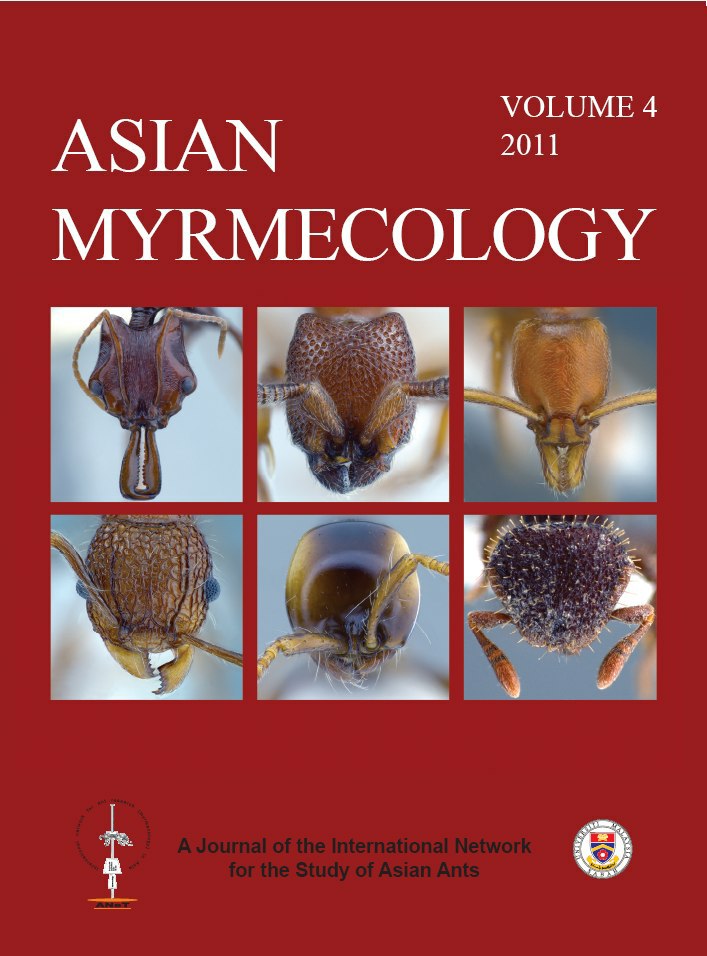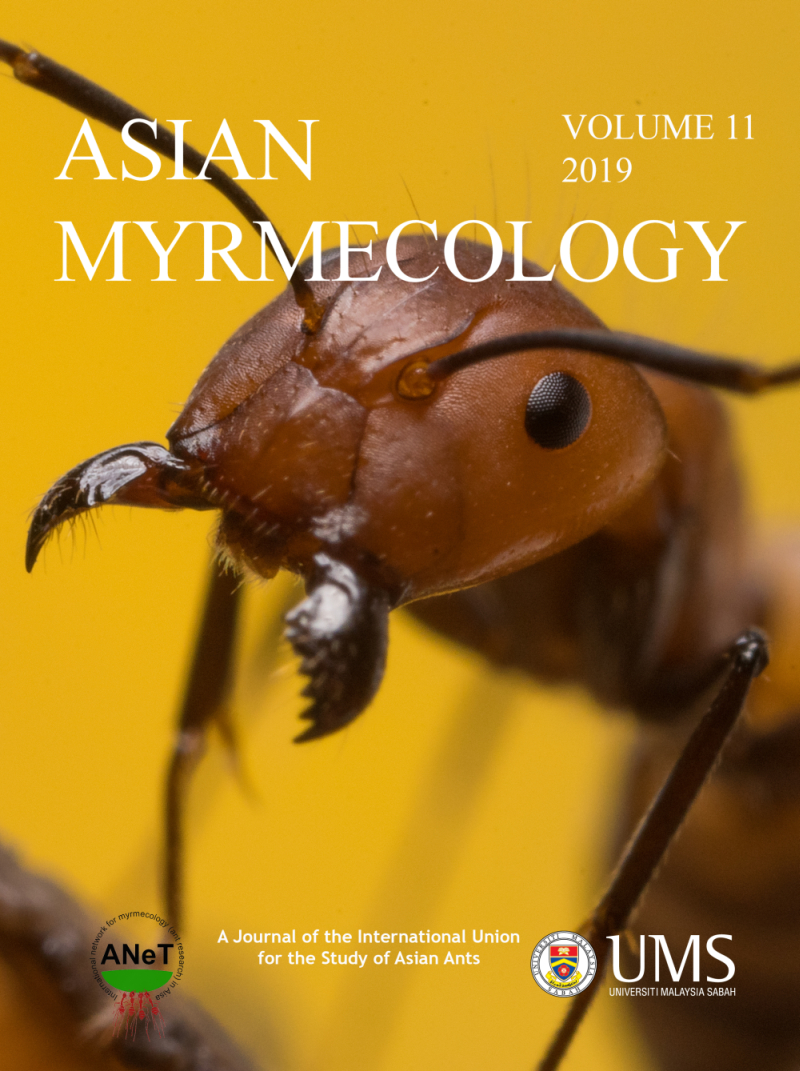ASIAN
MYRMECOLOGY
Image: François Brassard
Ecology and Distribution
Asian Myrmecology, Volume 4, pages 59-69, published December 2011
DOI: 10.20362/am.004003
Impacts of forest fragmentation on the genetic diversity and population structure of Pachycondyla obscurans in Sabah, Malaysian Borneo
NOEL TAWATAO1*, NEIL E. HARPER1, MARYATI MOHAMED2, CHEY V. KHEN3, JEREMY B. SEARLE1, 4 & JANE K. HILL1
Abstract:
The impact of forest fragmentation on genetic diversity of Pachycondyla obscurans, a predatory forest-specialist ant species, was investigated in six forest locations using Amplified Fragment Length Polymorphism (AFLP) fingerprinting. There was little difference in genetic diversity between three large forest locations (two locations in continuous forest, plus one 120,000 ha fragment) and three small forest fragments (151–320 ha). Populations from two locations approximately 60 km apart in continuous forest showed little genetic differentiation, but genetic differences between all other locations (35–164 km apart), which are separated by oil palm plantations, were much greater. There was no significant relationship between geographical distance and genetic distance (pairwise FST values) between locations. Overall, we conclude that the genetic diversity of P. obscurans has not been affected by habitat fragmentation over the past fifty years, but locations separated by forest were more genetically similar than those separated by agricultural areas. This implies that an inhospitable intervening matrix may prevent ant dispersal, and may result in genetic erosion of insect populations in the longer term.
Keywords:
Forest fragmentation, ants, Pachycondyla obscurans, genetic diversity, Sabah, Malaysia
Get PDF (512K):
1Department of Biology, University of York, YO10 5DD UK
2Universiti Tun Hussein Onn Malaysia, 86400 Johor, Malaysia
3Sabah Forestry Department Forest Research Centre, P.O. Box 1407, 90715 Sandakan, Sabah, Malaysia
4Department of Ecology and Evolutionary Biology, Cornell University, Ithaca, NY 14853-2701, USA
*Corresponding author: noel.tawatao@york.ac.uk



